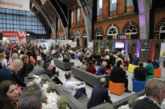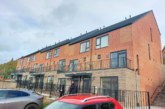Analysis by London Councils reveals almost double the number of homeless women than men are in temporary accommodation arranged by a borough in the capital.
Based on government figures, the research shows 42,000 occupants of temporary accommodation in London are female adults compared to 21,700 male adults — meaning 65% of adult occupants are women.
According to the data, 39% of homeless households in temporary accommodation in the capital are headed by single mothers. More than 86,000 children live in temporary accommodation in London.
London Councils, which represents all 32 boroughs and the City of London Corporation, says the findings show both the shocking scale of the capital’s family homelessness crisis and the particularly severe impact on women.
Highlighting that women are more likely to experience ‘hidden homelessness’, the cross-party group believes more research and policy focus is needed on supporting women without a permanent home and preventing them from becoming homeless in the first place.
Housing affordability is the key factor behind most homelessness cases in London, especially where households rely on a single income or universal credit claim. However, other specific challenges — such as fleeing domestic abuse — can explain why women turn to their local council for housing support.
London Councils is also calling for more welfare support to help low-income Londoners meet their housing costs and a strengthening of boroughs’ ability to build new council housing.
Cllr Darren Rodwell, London Councils’ Executive Member for Housing & Planning, said: “The specific challenges around women’s homelessness are too often overlooked. We’re hugely concerned by the number of women becoming homeless and requiring temporary accommodation in the capital.
“London continues to suffer the highest homelessness rates in the country — especially in terms of the hidden homelessness identified through temporary accommodation figures. More must be done to understand the particularly severe impact on female Londoners and to help them avoid homelessness.”
Homelessness takes many forms, with rough sleeping the most visible. Only 16% of those seen sleeping rough in London in 2020/21 were women (around 1,700 individuals) — although the actual number is considered to be higher as women are more likely to sleep in hidden spots for safety reasons.
Compared to rough sleeping figures, far more homeless Londoners are placed in temporary accommodation by their local authority. Temporary accommodation is arranged when a council has a responsibility to provide housing but no suitable long-term housing is available.
London Councils has repeatedly warned of the growing homelessness pressures in the capital, with boroughs collectively estimated to spend almost £1bn each year on homelessness support. The capital accounts for two thirds of all homelessness in England.
Header image ©Antonioguillem/AdobeStock









